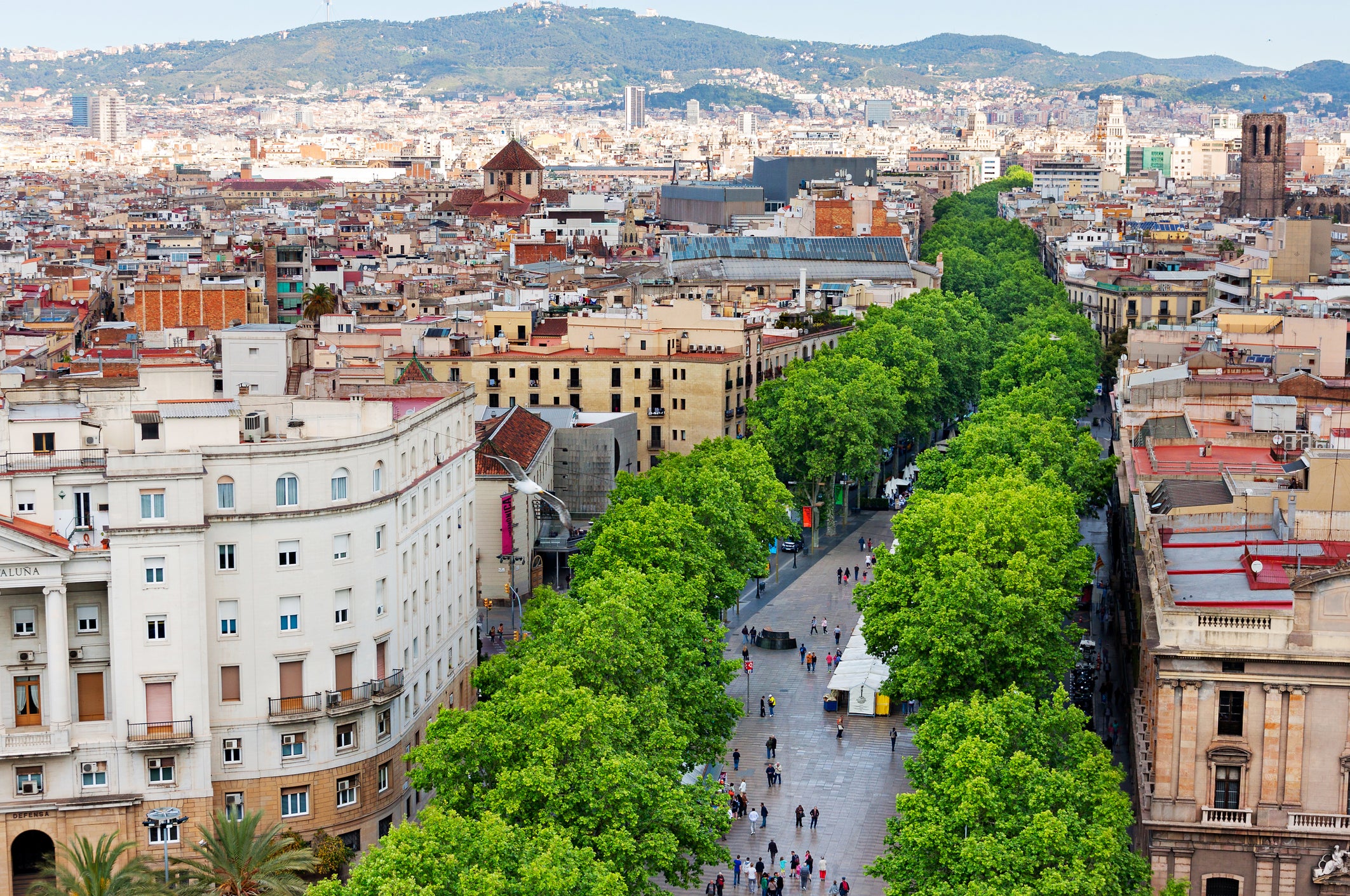Las Ramblas attack: Where is the Barcelona terrorist incident taking place?
The central boulevard in Barcelona has been hit by a terror attack

Las Ramblas is one of the best-known tourist hotspots in Barcelona.
It’s the busy, tree-lined central boulevard that cuts through the heart of the city centre – from Port Vell on the waterfront up to Placa Catalunya, the square which marks the point where the old city meets the rest of Barcelona.
The bustling street has a wide central pedestrianised section, with two service roads running along either side. During peak times, the central section is dense with tourists – few days would have been busier than a pleasantly hot day in the middle of August.
Like London Bridge, the Nice promenade and Berlin Christmas market – the busy street would have provided an easy target for attackers to inflict injuries on a large number of people.
Like many busy tourist destinations in capital cities, it has it’s dark side – it’s known for attracting pickpockets and petty thieves.
But despite the seediness of parts of the strip, it is still an integral and beloved part of the city, with Spanish poet Federico Garcia Lorca declaring that it is the “only street in the world which I wish would never end”.
It certainly has charm, with kiosks dotted around selling everything from flowers to snacks, and street traders and performers who compete for the passing tourists’ attention.
Landmarks include the Palace of Virreina, and the famous Liceu Theatre, where ballets and operas are staged.
One of the foremost attractions along the strip is La Boqueria market, one of the must-see sights listed in many guidebooks.
Below ground, the L3 line of Barcelona Metro runs beneath it, stopping at Catalunya, Liceu, and Drassanes stations.
Las Ramblas divides opinion – comments on its TripAdvisor page range from “bad food, expensive, impossible to walk” and “must-see in Barcelona”. Both reviews were posted within the past few days.
Before Las Ramblas was developed, it was a sewage-filled stream-bed.
But for hundreds of years it has been at the heart of city life in Barcelona and it’s used for festivals, markets and sports events.
In 1703, trees were planted for the first time – which have now grown into lush pleasant borders separating the central boulevard from the roads, shops and houses which line the street.
Subscribe to Independent Premium to bookmark this article
Want to bookmark your favourite articles and stories to read or reference later? Start your Independent Premium subscription today.

Join our commenting forum
Join thought-provoking conversations, follow other Independent readers and see their replies